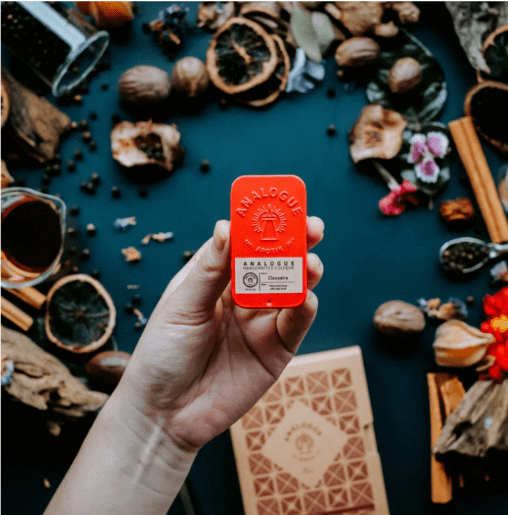This article is adapted from one that was first published in COSSMA 9/2022, www.cossma.com.
The COVID-19 pandemic accelerated growing consumer interest in ingredient-led beauty. Propelled by “skintellectuals”, this focus on ingredients is directly tied to the evolution of natural claims, wellness, and self-care trends that encourage consumers to experiment with new routines and improve their mental and physical states.
Botanical positioning resonates well with consumer demand for wellness and safety
In more recent years, consumers are being more mindful of ingredient formulations. Euromonitor International’s Beauty Survey found that in 2022, 19% of global respondents were influenced by ingredient formulation when purchasing skin care (up from 17% in 2021). Greater interest in ingredient formulation was also found in colour cosmetics in 2022, relative to 2021. A contributing factor is the frequency of high-profile recalls, lawsuits, and discontinuations that highlight specific ingredients across categories, particularly hair care (such as Unilever and Procter & Gamble’s recalls of dry shampoos in 2021 and 2022, and DevaCurl’s lawsuit alleging hair loss), sun care (such as Johnson & Johnson Inc’s Neutrogena recalls in 2022), and bath and shower (Johnson & Johnson Inc’s discontinuation of talcum powder). Greater consumer adoption in recent years of ingredient-checking apps such as Yuka, Think Dirty, EWG Healthy Living, also indicate the growing traction of ingredient hyperfocus among consumers.
Beauty consumers are actively associating botanical ingredients with safety, efficacy and wellness—which has resulted in some high-profile reformulations. Skin care brand Plant Apothecary relaunched its entire offering to focus on plant-based ingredients such as edelweiss, mulberry and watermelon. Recent business activity is centred around brands that have an ingredient-led positioning. L'Oréal Groupe’s acquisition of Youth to the People (known for its superfood ingredients), Unilever’s acquisition of Paula’s Choice (known for its dermocosmetics heritage and price accessibility within the premium tiers), and the eventual ownership of Canada-based Deciem Beauty Group (which owns “skinimalistic” pioneer The Ordinary) by The Estée Lauder Companies are some examples of how attractive ingredient-led beauty has become. Sun care is becoming increasingly sophisticated, as evident in trending products that target overall skin health, such as Coola’s sunless tan anti-aging face serum that contains argan oil, vitamin C and hyaluronic acid. As beauty enthusiast millennials and Generation Z consumers age and become new parents, there is clear demand for baby brands to offer the same variety of ingredients and claims parents are used to in their own beauty regimes.
Skin and scalp health underline growing desire for “skinified” formulations
As an increasing number of consumers view the scalp as an extension of the skin, hair care players continue to respond through more sophisticated formulations. DevaCurl incorporated micellar water, which is typically found in make-up removing facial cleansers, in its Buildup Buster Cleansing Serum to align more closely with the link between skin health and scalp health. A similar effect is found in personal care, in which deodorant brand Secret has introduced a new antiperspirant which features skin care ingredients designed to condition skin and prevent signs of underarm shave irritation.

Source: Analogue Apotik
The search for skin benefits in non-skin care products is underway, adding an element of newness to well-established categories. Foundations with Amazonian clay, concealers with nourishing coconut oils, and hydrating lip tints and lip oils speak to demand for colour cosmetics that go beyond covering or concealing skin problems. “Skinification” trends are resulting in new delivery formats. A pioneer in solid fragrances in Malaysia, indie brand Analogue Apotik, was designed to offer skin care benefits in a fragrance, but without the drying effect that comes from alcohol-based formulas.
Functional ingredients generate new positioning that expands wellness benefits
The rising priority of health and wellness is encouraging consumers to dig into specific ingredients stemming from Traditional Chinese Medicine and Ayurveda, opening up a nascent but burgeoning category of functional fragrances.
Functional fragrances include ingredients that provide benefits ranging from boosting, activating or calming one’s mood, and are meant to utilise therapeutic properties to address emotional wellbeing concerns, such as lack of sleep or stress. Fragrance players are heavily investing in research to study the link between the olfactory system and physiological changes. For instance, Sacheerome, an Indian-based fragrance and flavours company, partnered with universities to research the functional benefits of Ayurvedic ingredients, some of which include moringa, brahmi (Indian pennyworth) and kalonji (black seed).
At World Perfumery Congress 2022, India-based Sacheerome showcases ingredients from Ayurveda, a 3,000-year-old science, that treats physical ailments and provide therapeutic benefits through products in the beauty and home care spaces.

Association between ingredient safety and wellness strengthens post-pandemic
The demand for fragrances with hygienic benefits (such as antimicrobial and antioxidant properties), accelerated by consumers’ renewed perception of safety due to the pandemic, has remained high, influenced by heightened demand for emotional wellness. Popular fragrance ingredients, such as vanilla, tea tree oil, thyme, and rosemary, are already known to have antimicrobial and antioxidant benefits, but industry players are conducting further research to study the relationship between the ingredient and improved function in the body.
As the pandemic becomes more manageable and the world resumes some level of normality, consumer appetite for ingredient safety shows no signs of weakening, having gained momentum in both premium and mass beauty and personal care.
For further in-depth analysis, read Euromonitor International’s report, The Fragrance Phenomenon: Redefining Value and Priorities.
